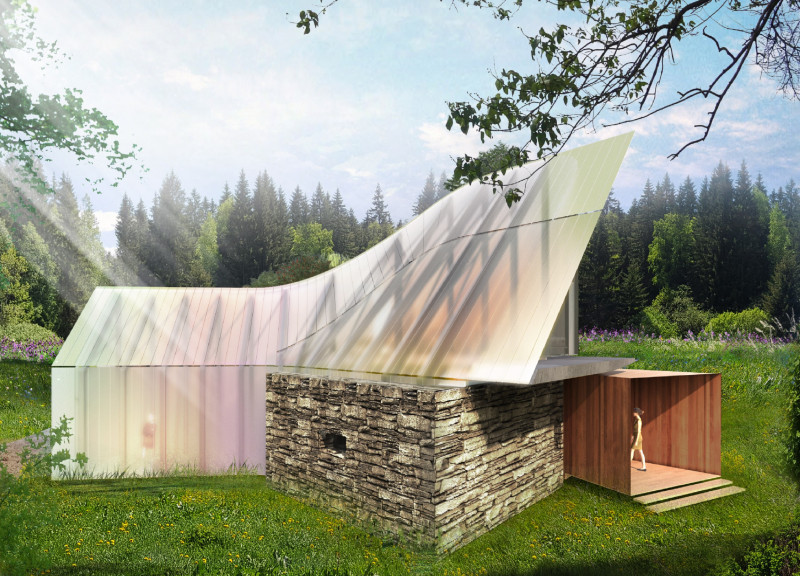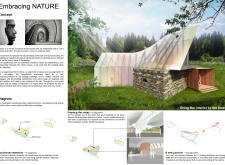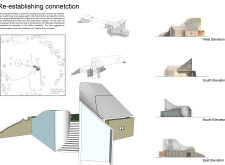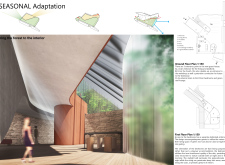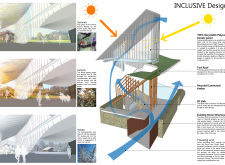5 key facts about this project
The TeaMakers Guesthouse is located in the scenic landscape of Latvia. This building serves dual purposes, functioning as both living spaces and a public workshop. The design focuses on creating a strong connection between residents and the natural surroundings. By incorporating existing structures into the new design, it highlights the beauty of the environment while providing practical spaces for community activity.
Adaptation to Context
The Guesthouse draws from the character of the existing Ozolini household and a disused hut. These structures inform the new design, creating a cohesive narrative that respects the site. The arrangement of spaces reorganizes functional needs while presenting inviting views of the landscape. This approach encourages meaningful interactions between the occupants and their surroundings, fostering a harmonious relationship with nature.
Functional Organization
The layout is organized into two main sections: private living areas and public workshop spaces. This clear division allows for easy movement between the two functions while maintaining privacy for residents. The main entrance is dedicated to those living in the Guesthouse, and separate access points cater to workshop visitors. This design choice supports a flexible and functional environment suited to various needs.
Material Considerations
Material selection is an important aspect of the overall design. The building uses 100% recyclable polycarbonate panels, which provide effective insulation and allow natural light to filter in. This choice helps reduce energy use while maintaining a comfortable atmosphere. The turf roof serves practical purposes as well, offering insulation and extending outdoor space for relaxation or activities.
Visual Connection
The building’s design emphasizes the importance of visual connections to the surrounding landscape. The disused hut is reimagined as a quiet tearoom, positioned to take advantage of calming views. A gently flowing roofline links the new extension with existing structures, enhancing the experience of the site. This thoughtful design invites occupants to engage with their environment and enjoy the natural beauty that surrounds them.


